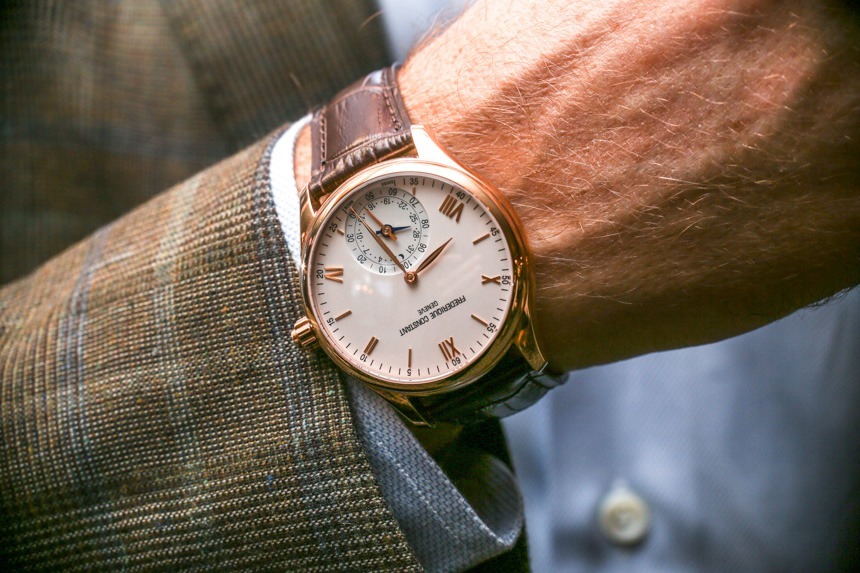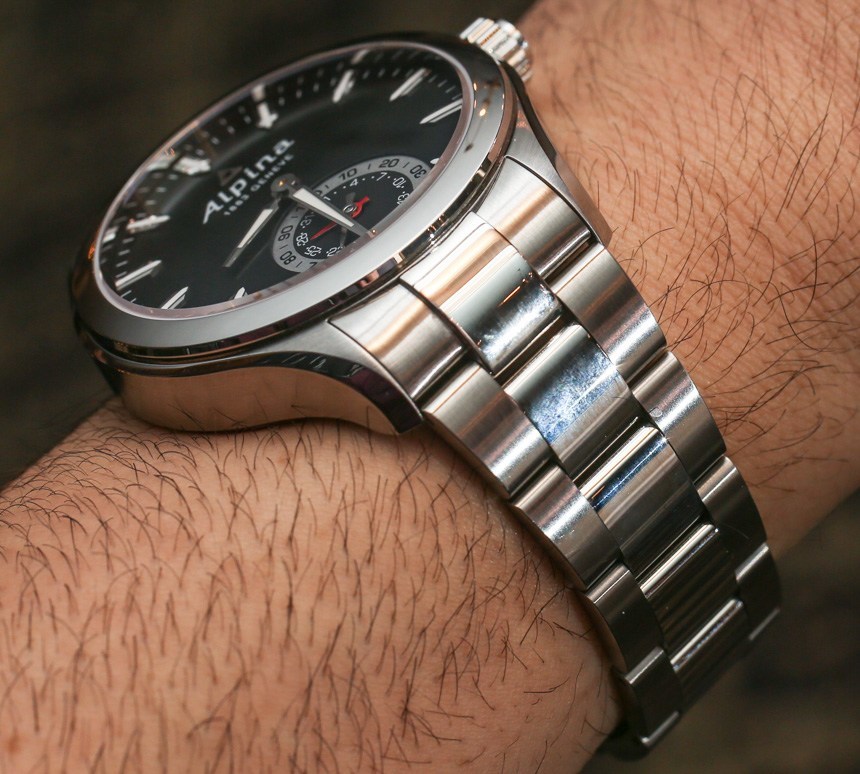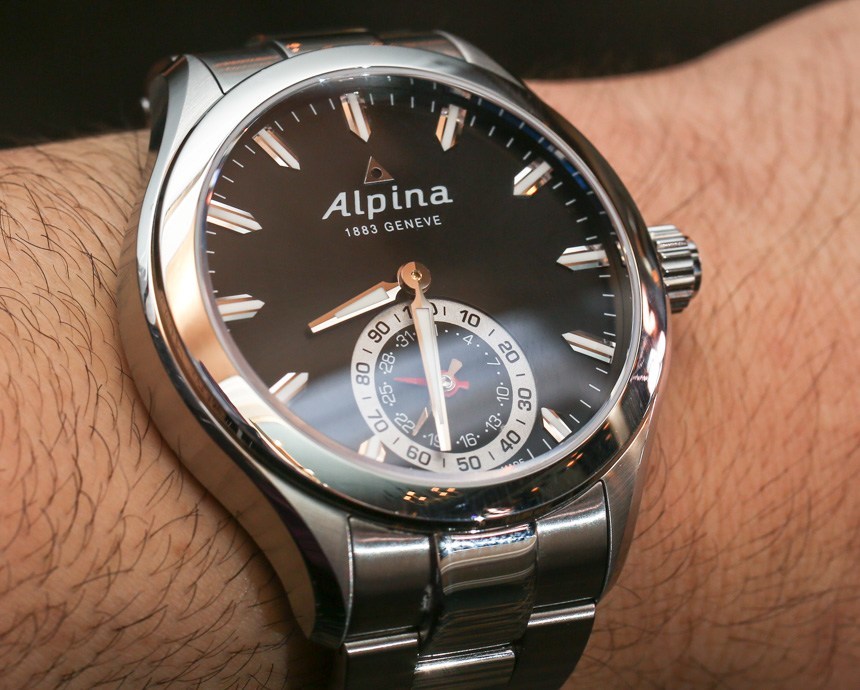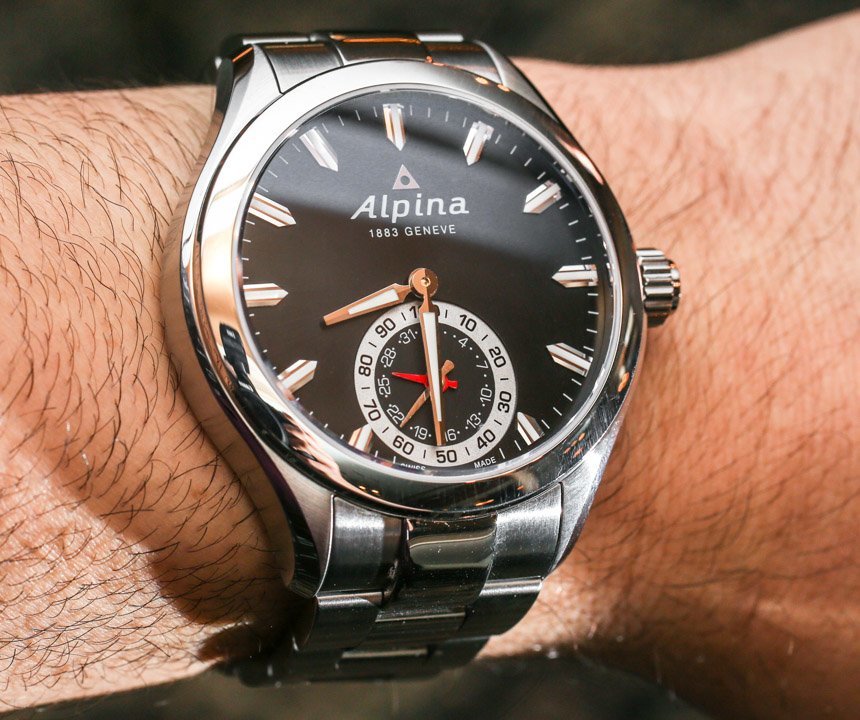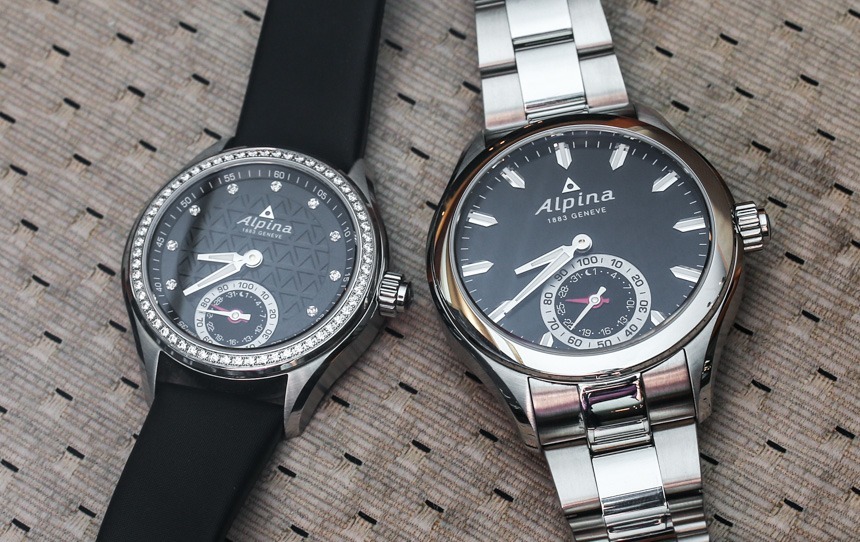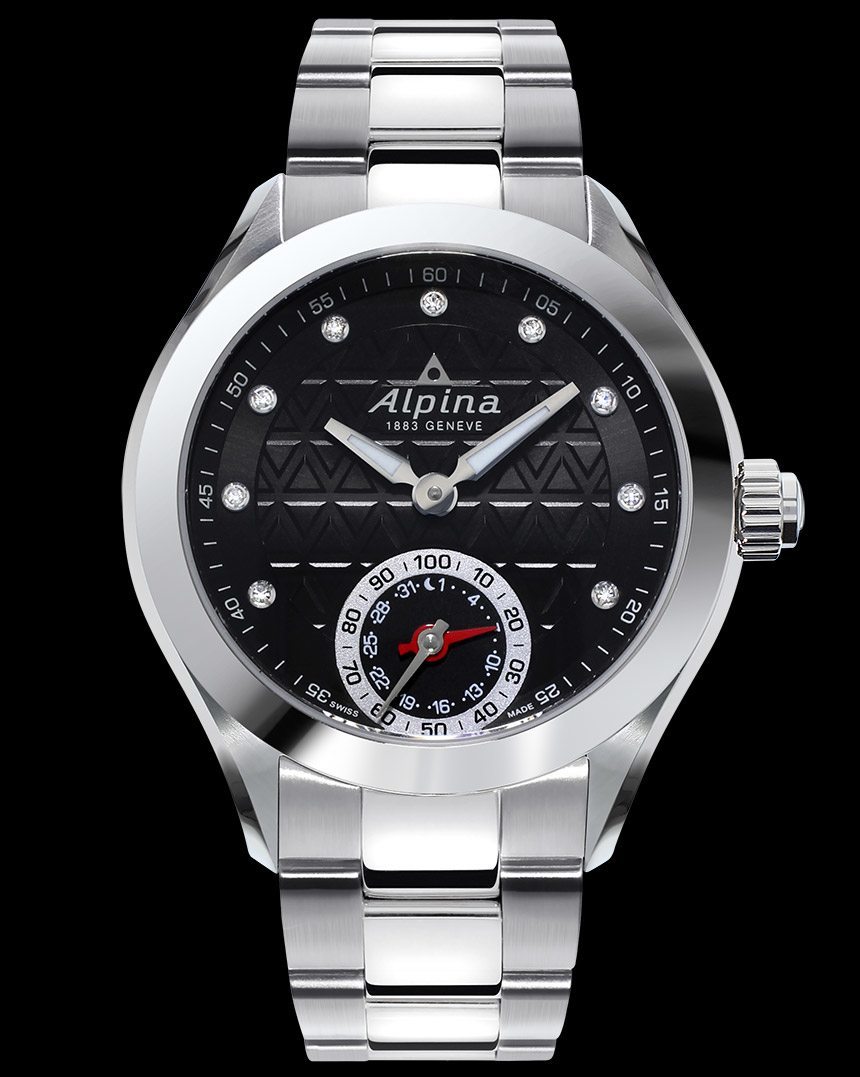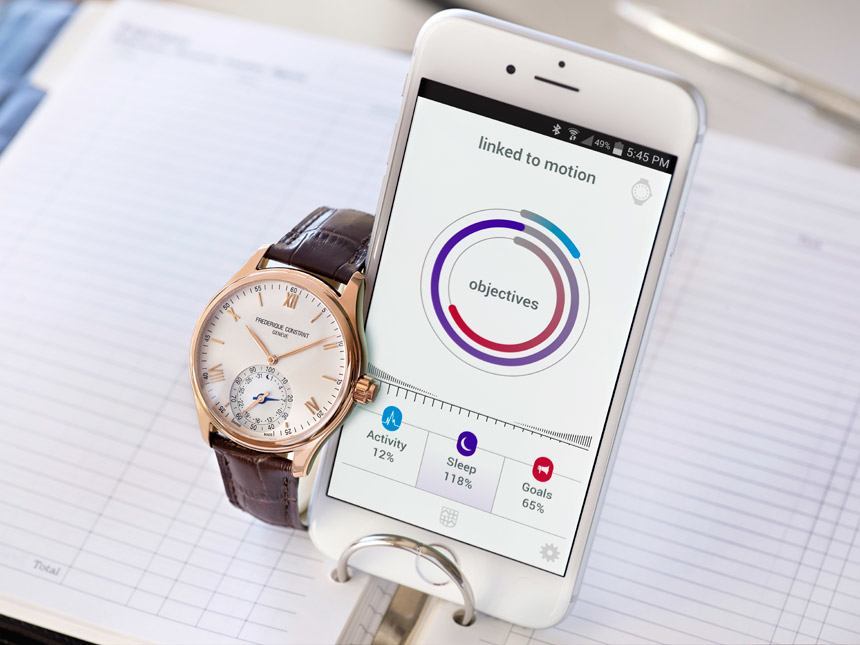
Ever since the smartwatch became a thing, I have been preaching that companies need to pool their resources and talents to create something that consumers want. A new type of smartwatch platform called MMT (Manufacture Modules Technologies) was just announced out of partnership between a series of companies both in Switzerland and in Silicon Valley. This isn’t a big deal just because it means the small but crowded smartwatch market has a new face, but because, in my opinion, it represents a wise step in the right direction of how the Swiss luxury watch industry needs to integrate itself into the smartwatch world. Welcome to the MMT electronic watch movement family and the Horological Smartwatch.
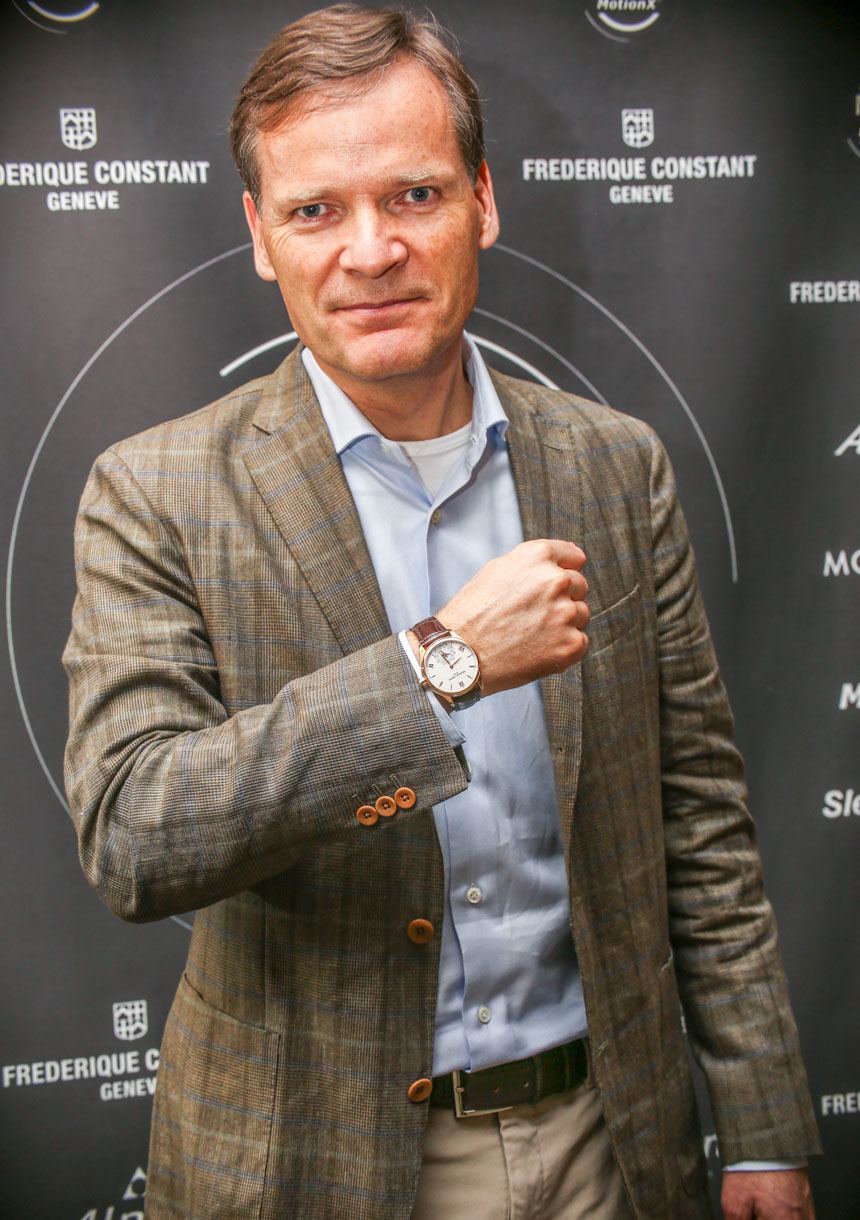
Peter Stas, CEO of Frédérique Constant / Alpina, wearing the Frédérique Constant Horological Smartwatch Reference FC-285V5B4
Who is behind MMT? It is Peter Stas of Frederique Constant/Alpina and Philippe Khan of Fullpower and MotionX technology which has been an innovator in activity and sleep tracking solutions for wearable devices. Think of it this way, MotionX will be responsible for producing a modular smartwatch system that can be placed in any watch, and companies like Frédérique Constant will have the responsibility to design a pretty timepiece around it that consumers want.
What people really want to know is what MMT is and what it offers. The initial Horological Smartwatch products share a lot in common with other minimalist smartwatch platforms with mostly, or all-analog dials. Withings watches will come to mind for most people. MMT watches will have no digital screens and no charging ports. For most people seeing them, they will look identical to traditional analog timepieces.
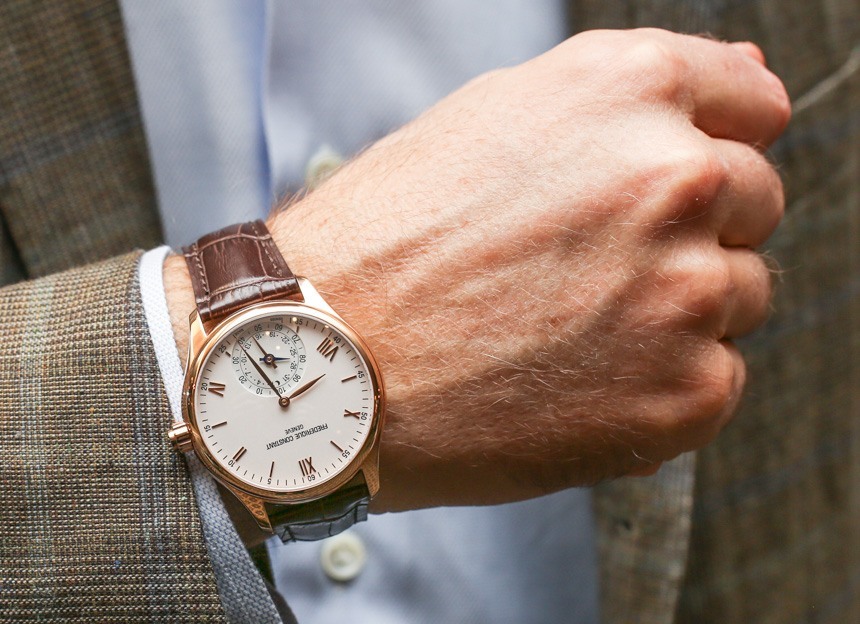
Let’s get the battery life question out of the way. How long does the battery last? About two years. That’s right, the MMT movement is designed to be like traditional quartz battery-operated watches that require a new battery each few years. Frédérique Constant and MotionX determined that their target demographic doesn’t want to charge things on a regular basis, and from the start, having a “reasonable amount of battery life” was a priority.
The Horological Smartwatch with an MMT movement will connect to a host phone via Bluetooth and there will, of course, be a companion app that is vital to the experience. The watch itself only displays the time (without seconds), date, and a progress indicator meant to help the wearer know whether or not they have reached their daily activity goals. The sole input device on the watch is the crown which is just a pusher. That means you cannot even set the time unless you go into the app. I am a bit concerned about the necessary level of connectivity the watch has to your phone (iPhone or Android), but that is likely due to the fact that I simply have yet to live with such a device.

The MMT Horological Smartwatch also has a “night mode” so that it can track your sleep activity and help measure your sleep quality and “efficiency.” This is something that MotionX has a lot of experience with, as it provides the technology to a lot fitness tracking wearable devices. Press in the crown of the Horological Smartwatch, and the date indicator hand moves to the small moon symbol on the dial, which means you are in sleep mode. You can either wear the watch while sleeping, or put it under your pillow.
The data from the combined fitness tracking features of the watch are displayed graphically, and with customizable goals, in an attractive app that uses the now popular graphical styles many people are becoming used to. It isn’t clear what people are doing with all this activity data, but people sure seem to be interested in it. I do however believe in the power of “suggestive alerts” that help people know they have been too sedentary or that they haven’t completed their daily goals. The managements at Frédérique Constant and Alpina both expressed a lot of surprise at just how much this type of information has impacted their lives.
This goes along with what I have predicted are a series of “wow” moments that consumers will experience in various ways as they understand how a smartwatch can have a valued place in their already technologically crowded lives. The question MMT is trying to answer is how the traditional watch industry will react to timepieces no longer being about only tradition, luxury, and style, but also (once again), functionality.
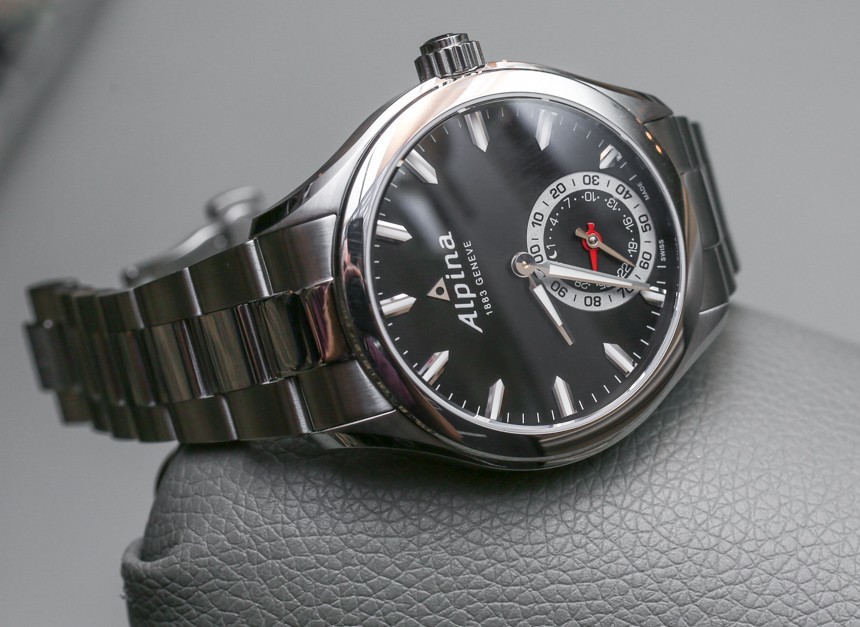
What I really like about the MMT platform is that it isn’t about phone notifications on your wrist. I’ve played with devices that tell me I have new e-mail and unread text messages or if a call is coming in. I’ve just found them by-and-large to be rather useless. What I am looking for, is a smartwatch that acts smart and looks smart.
aBlogtoWatch has been covering smartwatches extensively, and in my article, “How Screwed Is The Watch Industry Thanks To The Apple Watch?”, a topic we explored is how Switzerland will adapt to how smartwatches are likely to be a major disrupting force. That article fired up debates and currently has over 270 comments already, which indicates just how important this issue is to watch enthusiasts around the world. What is, however, much more scarcely – if ever – discussed, is a possible bridge between traditional watchmaking and the smart watch era; possibly because it did, for long, seem unlikely to happen anytime soon. What Frédérique Constant is doing is being just disruptive enough to show that the Swiss watch industry can do something out of the box, but not so different that it alienates that traditional sense of European style and class. The Frédérique Constant and Alpina Horological smartwatches are not bad-looking.
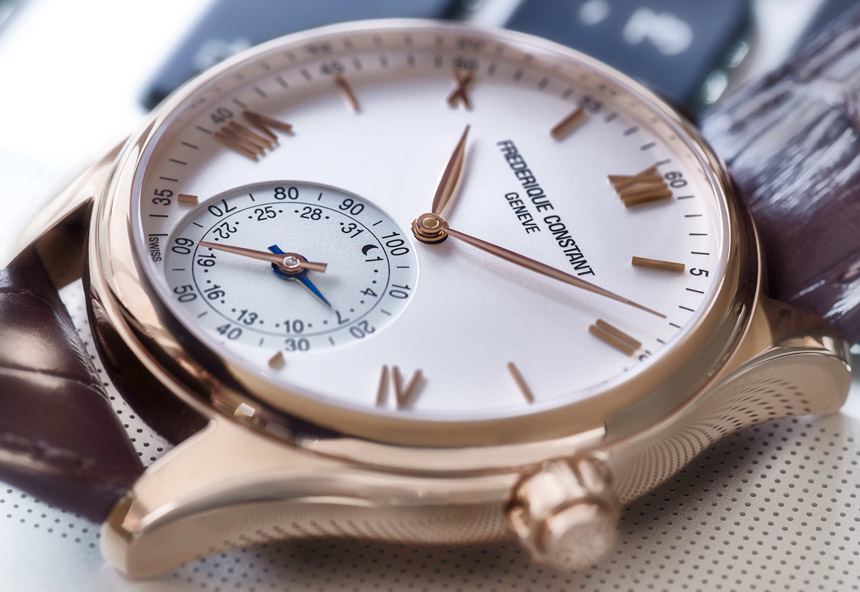
There are other benefits to the concept, above-and-beyond simply tracking your fitness and sleep data. On a simple level, the watch will connect to your phone and always have the correct time, dates, and will change times fluidly as you travel between time zones. You don’t need to activate a screen to read the watch, and most importantly, they look totally appropriate with a suit, or on a date. Is this the beginning of the “stealth smartwatch?” “You know it is smart, and all they need to know is that it looks sharp.”
What about women? Ah yes, female consumers have not been left out. In addition to a collection of Horological Smartwatches for men, Alpina (at first) is releasing an entire range of women’s Horological Smartwatches (even with diamonds). They have found women to be very interested in fitness tracking technology, but have little interest in wearing a gadget. The MMT solution solves that. Fullpower CEO Philippe Kahn put it best when he told me that it was his job to make the technology work and be useful, and the Swiss’ job to make it look good and be wearable. I’ve always suggested that just such an approach was the wisest way of making a smartwatch that consumers are ready to wear sooner, rather than later.
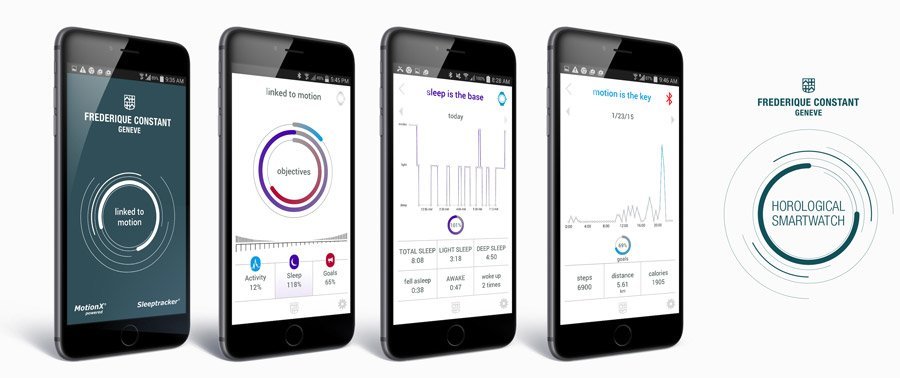

Another important point to make, is that while Peter Stas of Frederique Constant and Alpina is the CEO of MMT, the technology is not at all destined to be exclusively for those brands. In a sense, I think MMT wants to be the ETA of smartwatch modules for Swiss watches. ETA is a large traditional Swiss watch movement maker (owned by the Swatch Group) that produced movements for a range of brands. MMT wants to be the hardware and software back-end for a lot of other brands who want to create smartwatch designs of their own but lack the desire or skills to create the technology. One of the most difficult elements of a modern smartwatch isn’t the on-board technology, but the cloud-based computing solution behind-the-scenes that makes so much of the “platform” work.

What about the future and upgrades? Will Horological Smartwatches be just another gadget you discard in a year? MMT is trying to avoid that with a few interesting ideas that have yet to be put into practice. In a basic sense, the on-board firmware will be automatically updated all the time. That is simple, and a given. What is more interesting is that brands like Frederique Constant and Alpina want to maintain long-term relationships with their customers and actually upgrade the hardware in the Horological Smartwatch products. Again, this has yet to be proven in the real world but does have potential and is an important part of the Swiss watch buying core experience – that is, to have something you feel as though you can either pass down to an heir or that will at least last you many years.
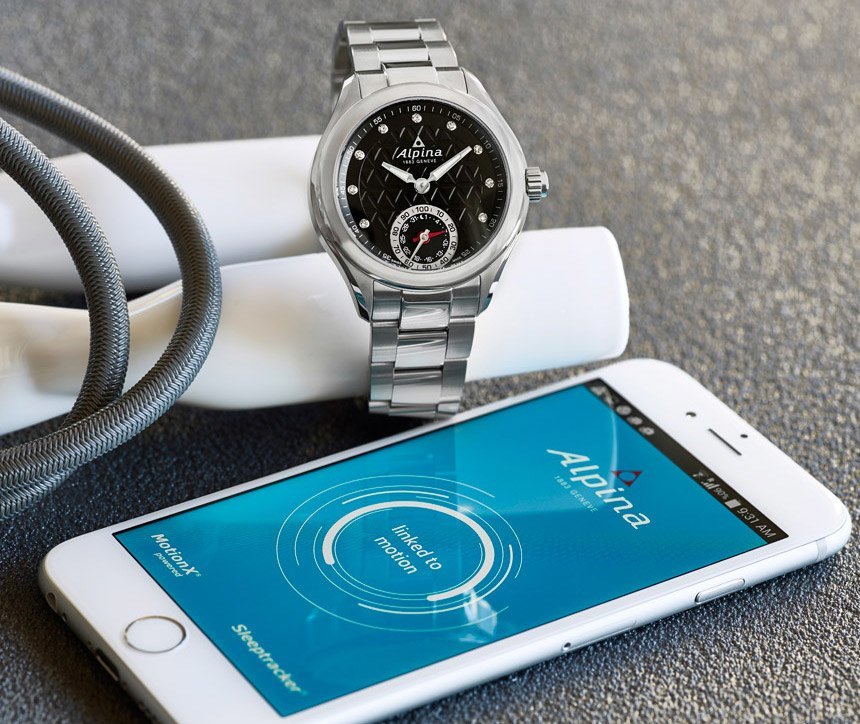
If you currently own a dressy or sport watch with a quartz movement, upgrading to something like a Horological Smartwatch will have no real drawbacks and it will be an upgrade. If you are used to mechanical watches, then anything electronic will force you to make a difficult decision. I don’t actually think Frederique Constant or Alpina are trying to convert traditional watch lovers actively. If people are curious, they will get one, but I think there is a much larger pool of quartz watch owners that will be more tempted by these early MMT movement-based timepieces.
The first “other” watch brand to be part of the MMT movement launch is Swiss Mondaine. Known for their Swiss Railways watches, Mondaine will launch The Mondaine Helvetica Smart Swiss Watch later this year in the $700 – $1,000 price point. It will be interesting to see what other companies decide to experiment with MMT modules in the near future.
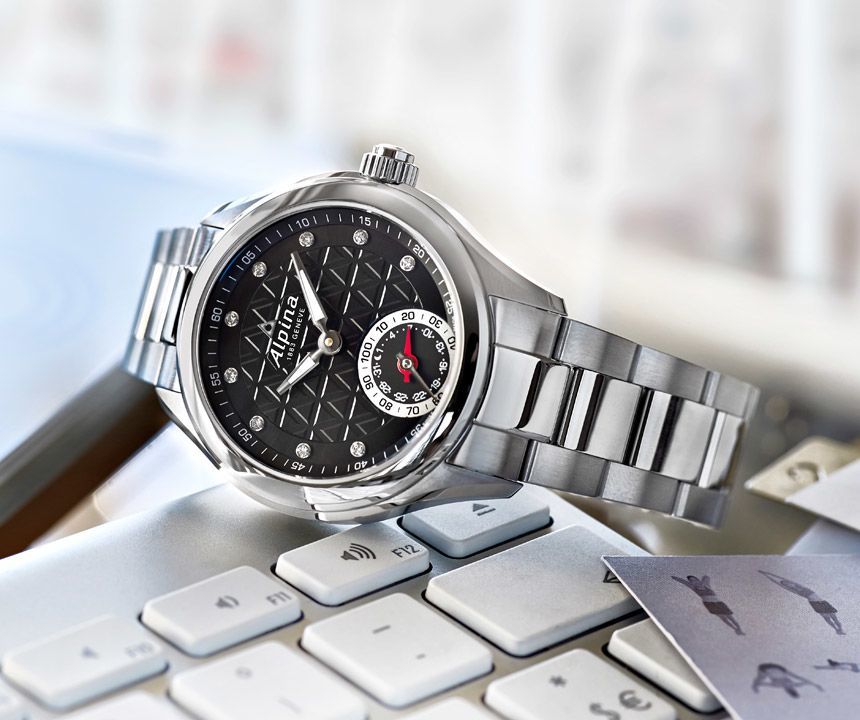
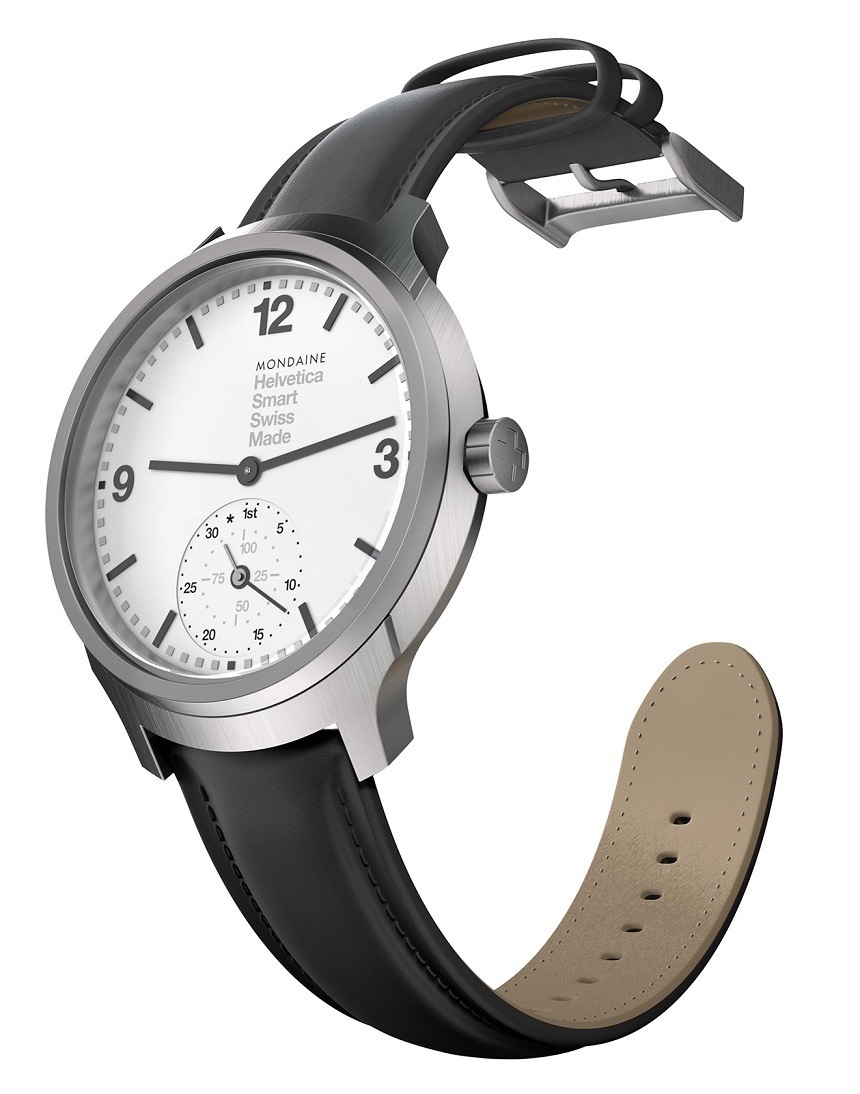
We don’t have too many technical specs for the watches, but having seen them hands-on, I can say that they are on-par with the quality of other Frederique Constant and Alpina watches. Frederique Constant will produce the “business” Horological Smartwatch, and Alpina will produce the sporty models and the first women’s watches. For men, the timepieces are about 44mm wide and perhaps 12mm or so thick. The ladies’ versions are smaller at perhaps 36mm wide, with a pleasantly modern feminine style (very much like a boyfriend watch – but with available diamonds). Prices for the watches will start at about $500 or so and go up to about $1,500 – $2,000 for the top-end models with diamonds. I would say that the average price of a Horological Smartwatch will be about $1,200 when they start to become available for sale in May or June 2015.
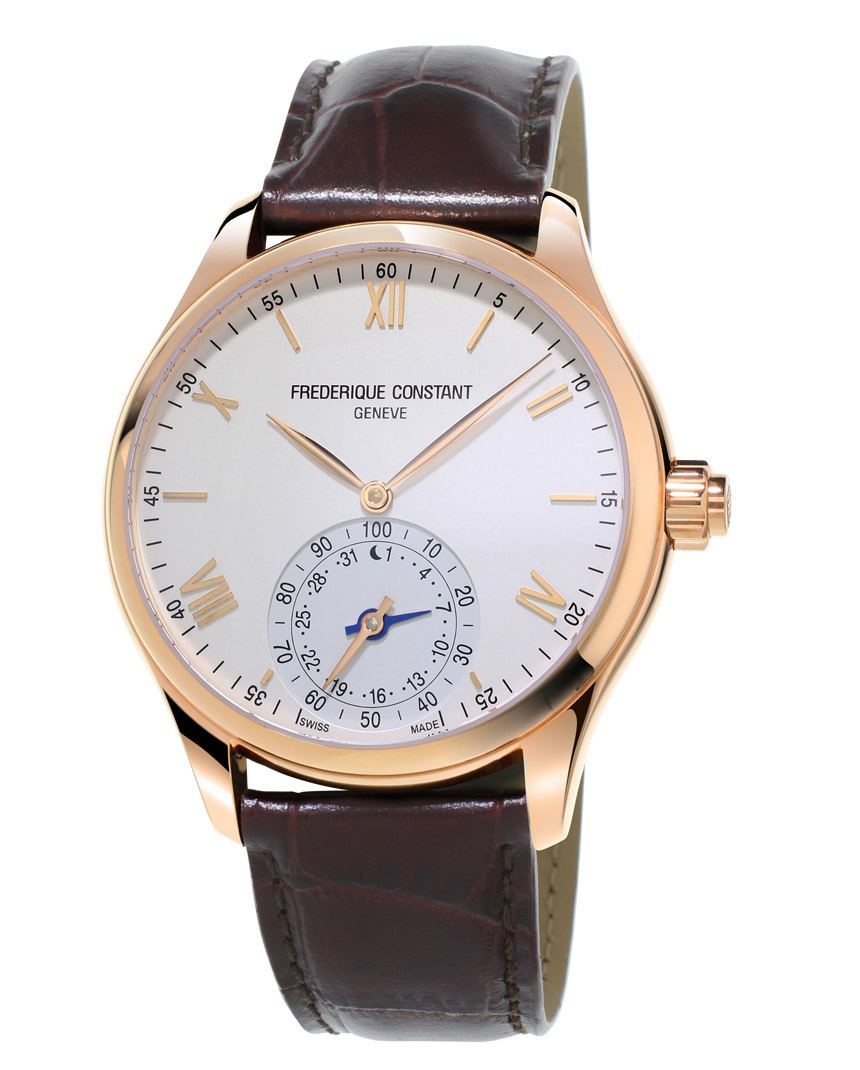
Both brands debut the technology with one new model each, with Frédérique Constant offering the Horological Smartwatch Reference FC-285V5B4 in a 42 millimeter wide, rose gold plated stainless steel case. Inside the watch is the FC-285 quartz caliber that allows all functions to be adjusted via the crown and which handles all functions MotionX delivers: the watch will be always on time, will have MotionX activity and sleep tracking, will provide sleep cycle and get-active alarms as well as adaptive coaching, plus you get MotionX cloud backup and restore of your data, probably for the time when you switch phones or watches. It is, nonetheless, fascinating to think that all this happens under a highly legible silver dial that sports hand-applied indices and hand-polished, rose-gold plated hands.
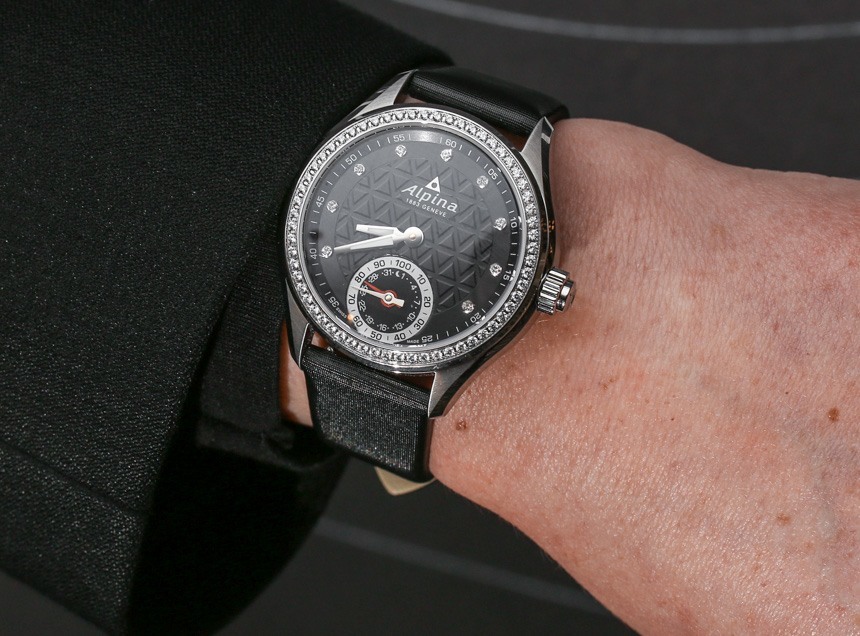
The watch Alpina debuts its Swiss Horological Smartwatch line actually has two variations: one is a ladies’ watch, the Alpina Reference AL-285BTD3C6B, which is a 39mm wide stainless steel watch, with 100 meters of water resistance (double that of the Frédérique Constant). The Alpina features the same AL-285 quartz movement and the same functionality, indicating that the technology can be fitted into a relatively small, 39mm case – which is very impressive. This Alpina model is available with a few different versions, depending on the diamond setting of the dial – we have seen versions that were more masculine with no diamonds, as well as one with diamond-set indices and bezel.
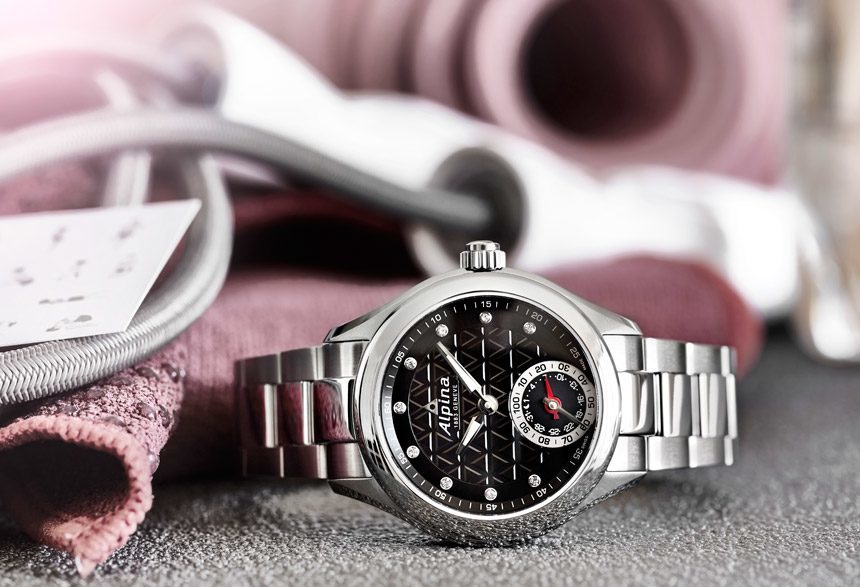
In essence, the MMT “Horological Smartwatch” by Frédérique Constant, Alpina and Mondaine has arrived and it promises to serve as a bridge between high-tech smart watches and traditional timepieces. We are looking forward to testing out how the claimed services of the watch and the apps function in real life, but, until then, we can say that the MMT seems to have the potential to strike the right balance between traditional watch design elements and modern fitness tracking smart watch functionalities. frederique-constant.com

